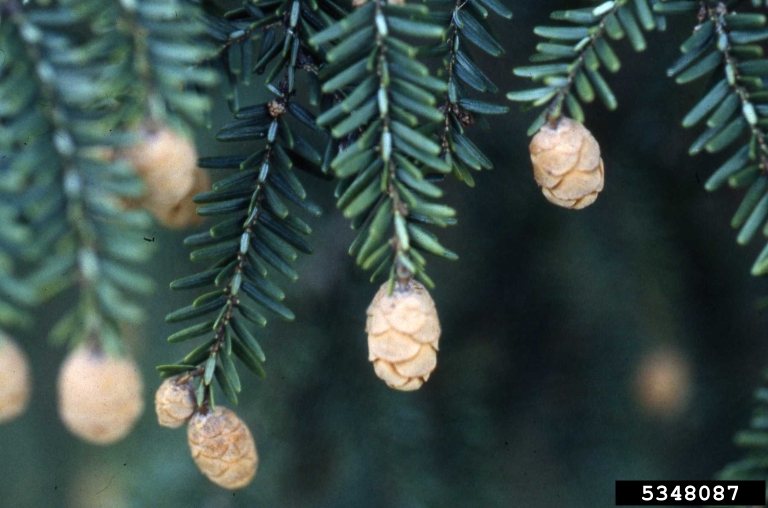 Of all the evergreens in the winter woods, eastern hemlocks are the friendliest.
Of all the evergreens in the winter woods, eastern hemlocks are the friendliest.
During the short, dark days of winter—when we are tempted to stay inside our heated spaces—the hemlock calls us to come out and play.
Treasured Tree
What makes the eastern hemlock so special to winter-weary humans?
- Its short, flat needles are soft to the touch (not prickly like spruce) and its trunk doesn’t gum up your hands with pitch.
- Hemlocks are shade loving and their lower branches can live for a long time, making them the perfect trees for finding or building shelters made of sticks and leaves.
- A mature hemlock creates such dense shade, and its needles cause the soil to be so acidic, that few other plants can grow underneath. As a result, hemlock groves create their own micro-environment—cool, open, and dark. Perfect places for hiding, resting, and playing games.
Wildlife Treat
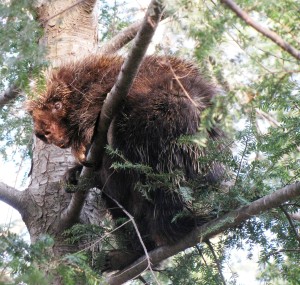 Hemlock groves are magical to non-human animals, too. Because hemlock branches hold so much snow, snow depths beneath the trees are significantly lower. Deer often bed down underneath these trees, taking advantage of shallower snow and sheltering branches. Treat yourself to an early morning snowshoe or hike. You may be able to follow deer tracks from hemlock to hemlock, finding packed snow outlining the shape of a deer underneath each one.
Hemlock groves are magical to non-human animals, too. Because hemlock branches hold so much snow, snow depths beneath the trees are significantly lower. Deer often bed down underneath these trees, taking advantage of shallower snow and sheltering branches. Treat yourself to an early morning snowshoe or hike. You may be able to follow deer tracks from hemlock to hemlock, finding packed snow outlining the shape of a deer underneath each one.
Many animals eat hemlock. (In case you were wondering, eastern hemlock is not the kind of hemlock that poisoned Socrates.) Grouse and rabbits eat buds and needles. Red squirrels and mice chew off the scales of the tiny hemlock cones to get at the seeds underneath. Deer will also eat hemlock foliage and twigs as high up as they can reach.
Porcupines prefer hemlock and will eat the bark and chew off large twigs. If you see scattered hemlock twigs or tips in the snow, look up. You may see a porcupine in the branches of the tree or, on at least one Mass Audubon wildlife sanctuary, living in the tree’s trunk.
The Fate of Hemlocks
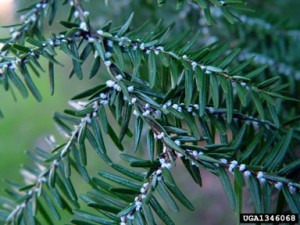 Sadly, our Massachusetts hemlocks are threatened by woolly adelgid, an aphid-like insect that sucks sap from the needles. If you see what look like tiny white cotton balls at the base of hemlock needles, you’ll know the tree is infested. Woolly adelgid can be killed by very cold winters or pesticides, and scientists are experimenting with biological controls, but currently there is no cure.
Sadly, our Massachusetts hemlocks are threatened by woolly adelgid, an aphid-like insect that sucks sap from the needles. If you see what look like tiny white cotton balls at the base of hemlock needles, you’ll know the tree is infested. Woolly adelgid can be killed by very cold winters or pesticides, and scientists are experimenting with biological controls, but currently there is no cure.
Warming temperatures encourage the spread of woolly adelgid, so we can help hemlocks by combating climate change. Find out how Mass Audubon is leading by example and how you, too, can reduce your carbon footprint.
Finding Hemlocks
Many Mass Audubon wildlife sanctuaries harbor hemlock groves, including Eagle Lake in Holden, Laughing Brook in Hampden, Pleasant Valley in Lenox, and Wachusett Meadow in Princeton.
Tread lightly. Approach quietly. Appreciate much. But go out and find a hemlock today, for there is no better friend in the winter woods than the eastern hemlock.
Learn more about winter trees in a Mass Audubon program.
Photos Richard Webb, Self-employed horticulurist, Bugwood.org;
Richard Johnson; Chris Evans, Illinois Wildlife Action Plan, Bugwood.org
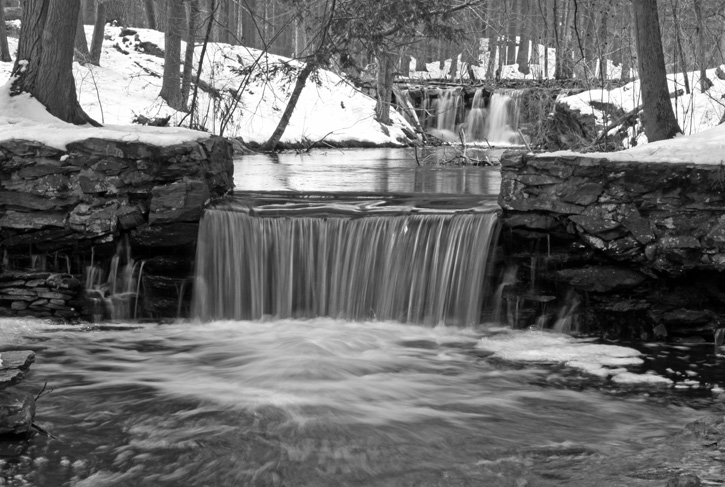
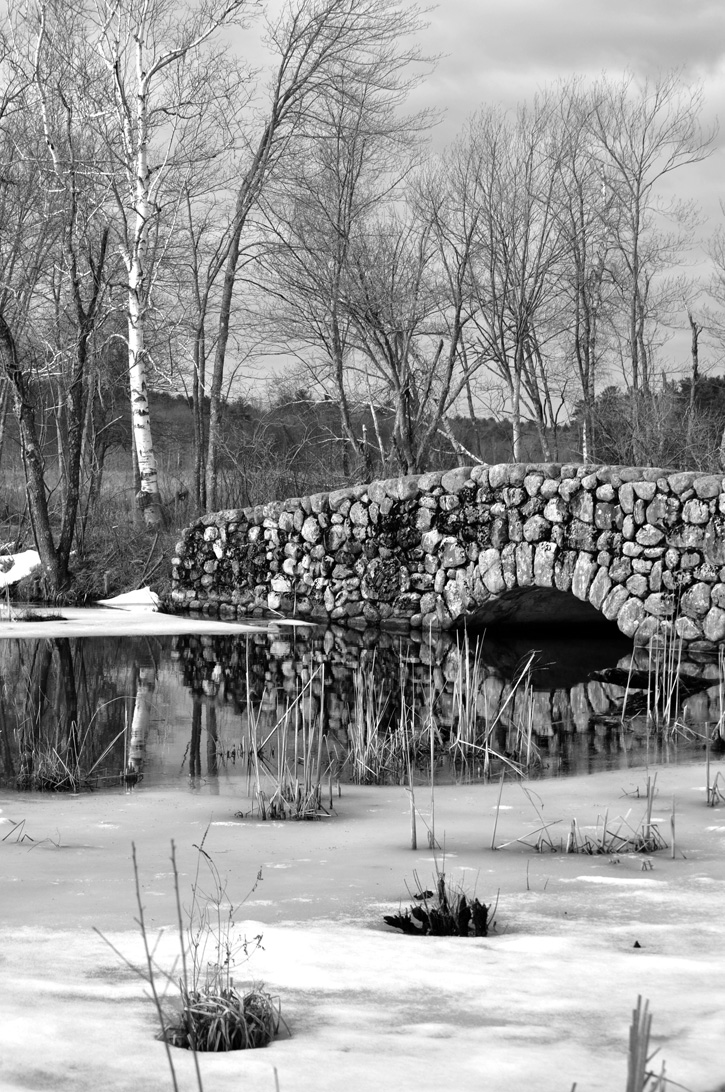
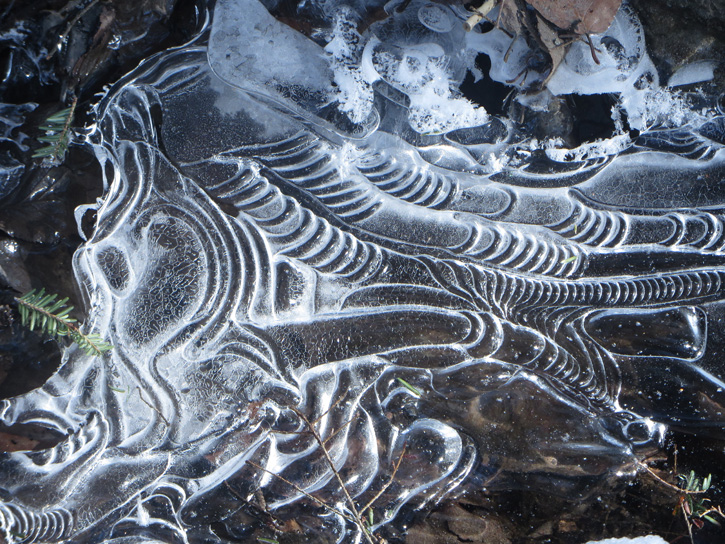
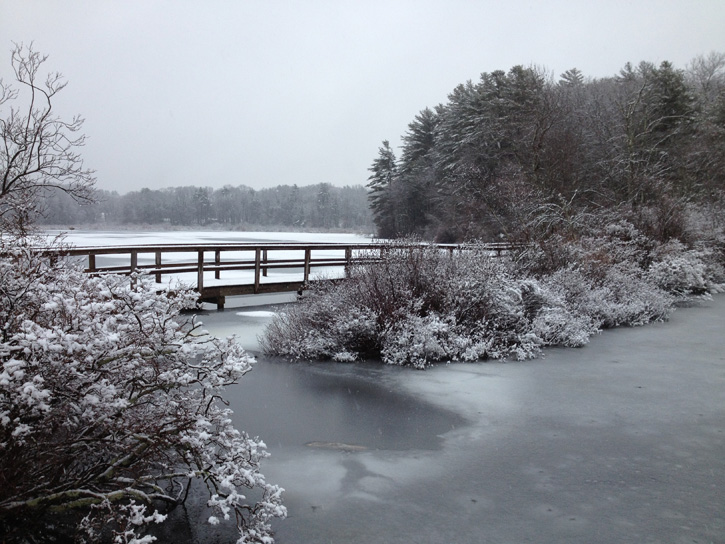
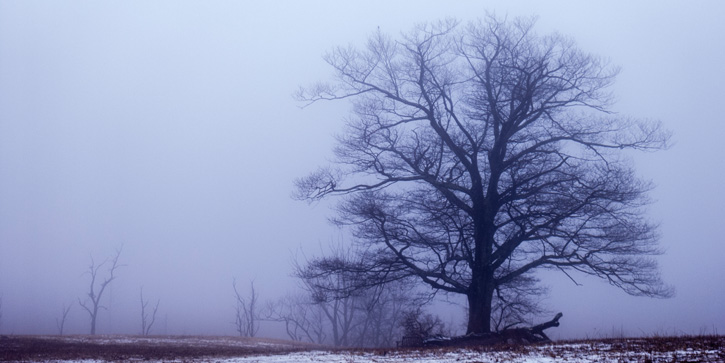


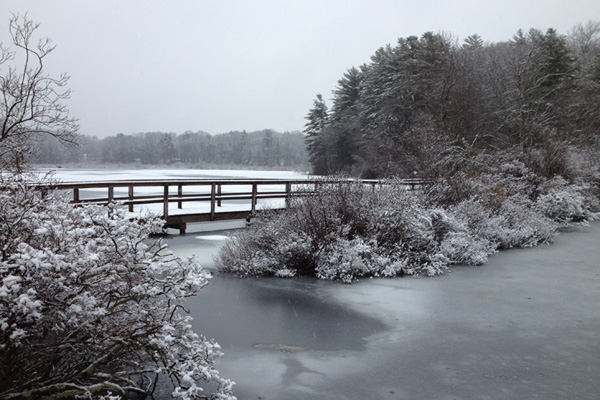
 Of all the evergreens in the winter woods, eastern hemlocks are the friendliest.
Of all the evergreens in the winter woods, eastern hemlocks are the friendliest. Hemlock groves are magical to non-human animals, too. Because hemlock branches hold so much snow, snow depths beneath the trees are significantly lower. Deer often bed down underneath these trees, taking advantage of shallower snow and sheltering branches. Treat yourself to an early morning snowshoe or hike. You may be able to follow deer tracks from hemlock to hemlock, finding packed snow outlining the shape of a deer underneath each one.
Hemlock groves are magical to non-human animals, too. Because hemlock branches hold so much snow, snow depths beneath the trees are significantly lower. Deer often bed down underneath these trees, taking advantage of shallower snow and sheltering branches. Treat yourself to an early morning snowshoe or hike. You may be able to follow deer tracks from hemlock to hemlock, finding packed snow outlining the shape of a deer underneath each one. Sadly, our Massachusetts hemlocks are threatened by
Sadly, our Massachusetts hemlocks are threatened by